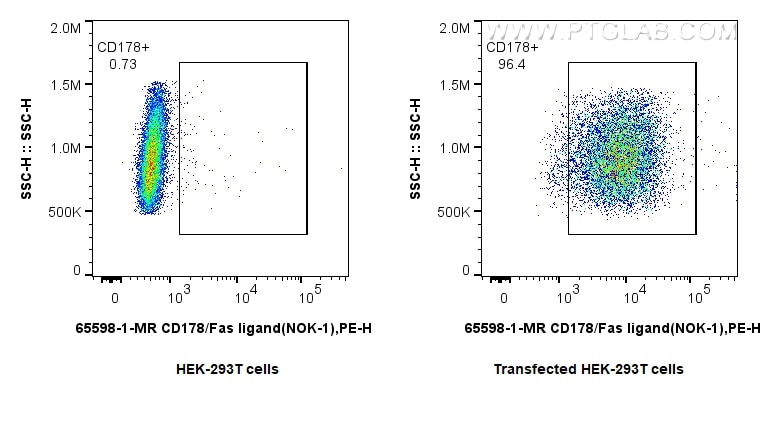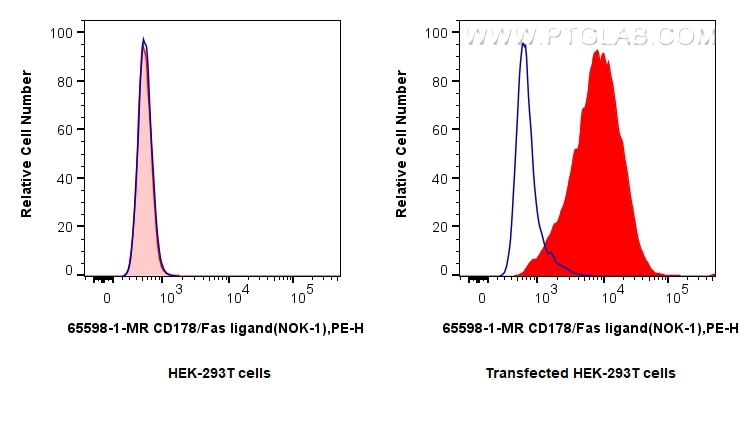Tested Applications
| Positive FC detected in | Transfected HEK-293T cells |
Recommended dilution
| Application | Dilution |
|---|---|
| This reagent has been tested for flow cytometric analysis. It is recommended that this reagent should be titrated in each testing system to obtain optimal results. | |
| Sample-dependent, Check data in validation data gallery. | |
Product Information
65598-1-MR targets CD178 (Fas ligand) in FC applications and shows reactivity with human samples.
| Tested Reactivity | human |
| Host / Isotype | Mouse / IgG2a |
| Class | Recombinant |
| Type | Antibody |
| Immunogen | L5178Y mouse T lymphoma cells expressing recombinant human FasL Predict reactive species |
| Full Name | Fas ligand (TNF superfamily, member 6) |
| Calculated Molecular Weight | 281 aa, 31 kDa |
| GenBank Accession Number | BC017502 |
| Gene Symbol | Fas Ligand |
| Gene ID (NCBI) | 356 |
| Conjugate | Unconjugated |
| Form | Liquid |
| Purification Method | Protein A purification |
| Storage Buffer | PBS with 0.09% sodium azide , pH 7.3 |
| Storage Conditions | Store at 2-8°C. Stable for one year after shipment. |
Background Information
CD178, also known as Fas ligand, is a type II transmembrane protein that belongs to the tumor necrosis factor (TNF) family. It is expressed on NK cells, cytotoxic T lymphocytes and activated CD4+ Th1 cells. CD178 transduces apoptotic signal into cells by binding to FAS/CD95. It is involved as a death factor in the regulation of activation-induced cell death, establishment of immune privilege and tumor cell survival.
Protocols
| Product Specific Protocols | |
|---|---|
| FC protocol for CD178 (Fas ligand) antibody 65598-1-MR | Download protocol |
| Standard Protocols | |
|---|---|
| Click here to view our Standard Protocols |





